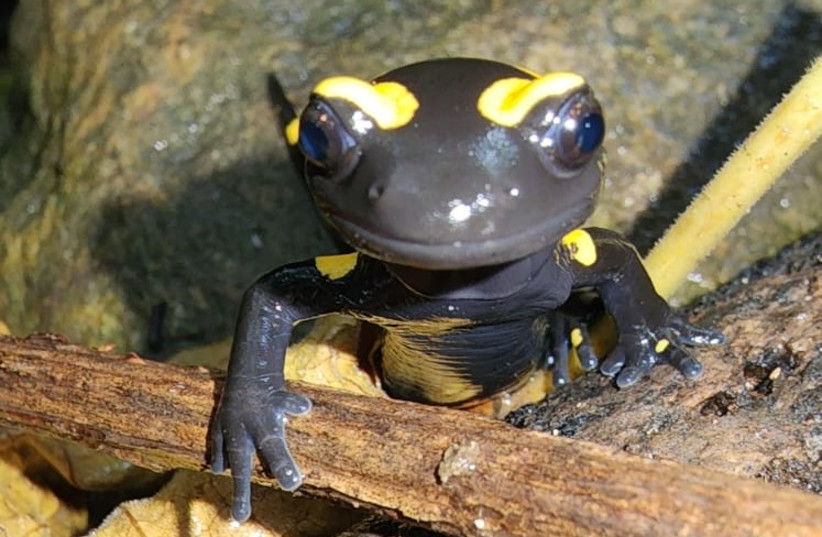Salamanders at the Banias River in Israel's north came out to say hello following the rains earlier this week and marked the approaching winter.
The salamanders at the Banias are black with orange or yellow patterns that are unique to each salamander. While they are not venomous, meaning their bite is not dangerous, salamanders' skin is poisonous so it is best to stay away from them.
Salamanders are commonly active in the winter on rainy nights when the females lay their eggs in water from the previous year's mating season. As soon as the female has laid her eggs, she and the male mate again.
A tadpole develops over one to three months depending on the circumstances and reaches maturity within four to six years. Even once they have reached maturity, salamanders stay close to home and their families.
Salamanders are facing extinction

Around the world, approximately a third of amphibian species are at risk of extinction, and in Israel, the salamanders are risking extinction along the Mediterranean cost line due to their habitat getting destroyed, isolation of communities, sicknesses, climate change, invading species and cars running them over.
The Nature and Parks Authority in Israel is working to save the salamanders as well as other amphibians who are at risk of extinction. Among its efforts, the authority is protecting breeding grounds, building ways for amphibians to cross roads safely, putting up mechanisms to stop them from getting stuck in wells and cisterns and educating people about the dangers faced by the species.
